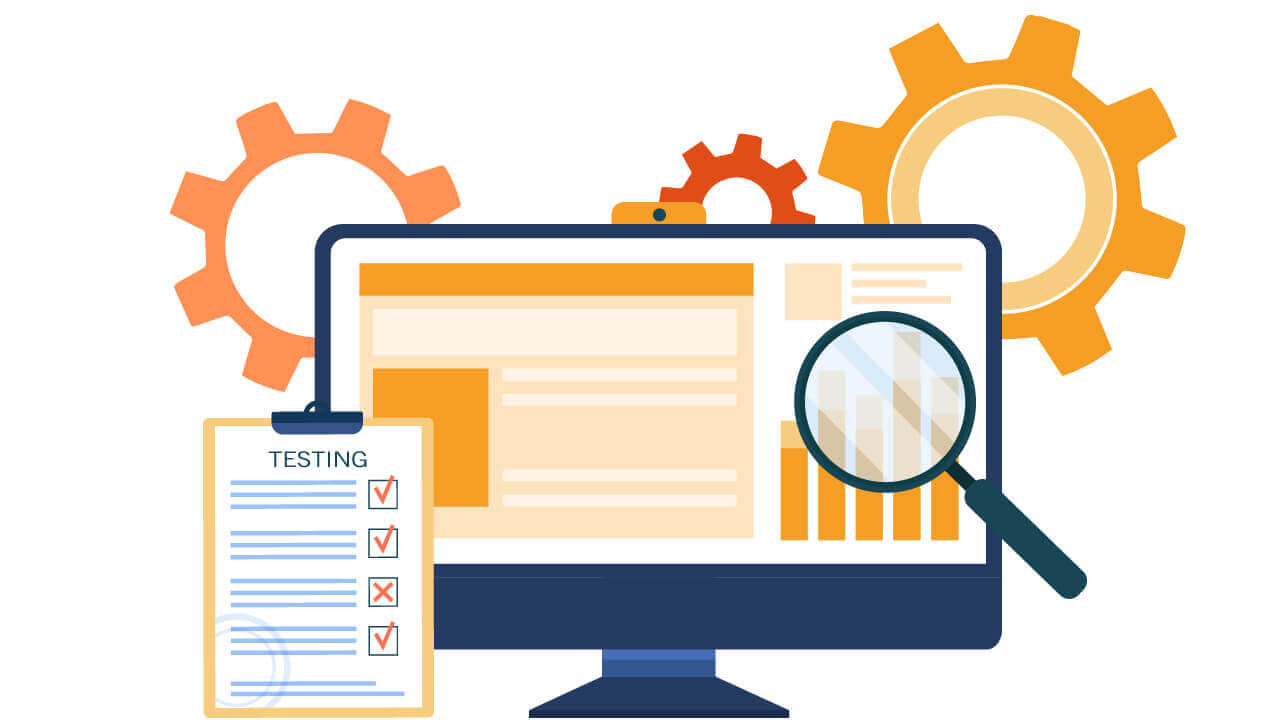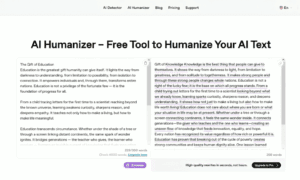A decade ago, a small in-house test group would run its manual scripts after the developers finished coding. That world has disappeared. Release cycles are shorter, customer expectations are higher, and every application now touches cloud services, mobile devices, and regulatory rules. Leadership must decide whether to keep quality assurance entirely inside the company walls, hire freelance specialists, or partner with a full-service firm that offers a broad bench of expertise. That choice influences cost structure, and time to market.
The author of the article is Dmitry Baraishuk, Chief Innovation Officer (CINO) at a software development firm, Belitsoft. This company helps businesses without sufficient in-house engineering resources to develop and maintain their solutions. Belitsoft supports startups and enterprises in the US, UK, and Canada with performance, load, stress, security, and other types of testing. The agency has verified its expertise with a 4.9/5 score from clients on reputable review platforms such as G2, Gartner, and GoodFirms.
The Three Core Hiring Models
Internal Testing Team
All activity happens behind the corporate firewall, every test asset is in in-house repositories, and institutional knowledge deepens release after release.
That control carries a price: fixed salaries, ongoing license fees, office space, and constant upskilling all remain on the P&L even when the development pipeline slows. In addition, no matter how committed the training budget, a captive group will rarely cover every niche skill now needed in modern software projects.
When a mobile front end calls for gesture-based automation, when an AI model demands specialized validation, or when a payment gateway must be penetration tested to the latest PCI standard, the internal capacity may be not enough, and recruitment lead times rarely match product deadlines.
Independent Consultants
A seasoned contractor can arrive on Monday, review the codebase on Tuesday, and write reliable performance scripts by the end of the week. The company pays only for the days consumed, overhead remains minimal, and knowledge transfer can happen in daily stand-ups without extra management.
The downside becomes clear the moment the scope widens: one brain delivers only one stream of work. Covering usability, accessibility, security, and load at the same time means stacking multiple freelancers, coordinating their contracts, and hoping that holidays, illnesses, or competing engagements do not collide with your critical path. At that point, the cost advantage fades.
Consulting firms
A consulting firm arrives during large transformation projects or when headcount limits block permanent hiring.
Their rate card can look steep at first glance, yet inside that price include project managers, toolchains, cloud environments, and specialists from database performance engineers to certified ethical hackers.
When a release plan demands parallel testing across web, mobile, API, and infrastructure layers – a firm’s ability to scale from two people to ten in a fortnight is often the only practical route.
Of course, breadth entails its own governance burden. Clients must define requirements precisely, agree on reporting rhythms, and accept that time zone differences or delayed communication can slow informal feedback loops. External teams also raise natural concerns about confidentiality: solid non-disclosure terms, strict role-based access controls, and segmented environments become part of the engagement foundation.
What External Partners Deliver
Executives need to understand which activities protect revenues, avert fines, and preserve brand trust.
A well-written strategy document makes that link explicit. It identifies the user journeys that drive the largest wallet share, maps those journeys to test objectives, and outlines exit criteria in unmistakable terms. The effect is similar to a project charter: everyone can see how today’s test cases defend tomorrow’s earnings.
With strategy in hand, consultants shift to building execution assets. For some features, human exploration remains irreplaceable.
For high-volume regression, automated scripts are essential and should integrate with the client’s CI pipeline so that they run on every merge.
Performance tests replicate real-world traffic, not lab conditions, and security scans combine automated coverage with manual probes that think like an attacker.
The partner’s tool choices must fit the client’s technology stack and skills. Delivering a sophisticated Playwright suite is pointless if no employee can maintain it after the consultants leave.
Busy executives need a single-page view that answers three questions: how many defects remain unresolved, what proportion of risky code is covered by automated checks, and whether current trends will meet the planned launch date.
A scatter of spreadsheets and sporadic emails will not do – dashboards should draw from the same source repositories and test runners the developers use, updating automatically and flagging any breach of tolerance in near real time.
When a partner presents this intelligence in plain language – “At current burndown, we will clear all high-severity issues by the June 18 code freeze” – leadership can make release decisions confidently instead of reacting to last-minute surprises.
The final service, and often the one that separates mediocre vendors from true partners, is capability uplift. A consultant who merely executes tests leaves behind reports that age quickly. A consultant who seeds process improvements, integrates the pipeline with modern tooling, shares templates, and trains staff leaves behind a sustainable quality culture. Six months after departure, the nightly regression suite still provides coverage reports, defect root causes are traced methodically, and new team members can onboard without digging through tribal knowledge.
The Skills That Matter
Delivering all four outcomes demands a blend of technical acuity and business fluency.
On the technical side, a reliable consultant can hand-author API calls in Postman, script a complex journey in Cypress, interpret CPU throttling diagrams from JMeter, and commit a working change to a Git branch.
He or she understands the difference between shift-left unit mocks and shift-right synthetic monitoring and can choose wisely depending on risk.
On the business side, the same individual must articulate why a one-second spike in login time will cost thousands of customers across a marketing campaign, or why a dormant injection vector might trigger mandatory disclosure under new data privacy statutes.
Those conversations often matter more than the code because they secure executive sponsorship and budget to remediate issues promptly. Many capable technicians struggle with that leap – the best consultants practice it daily.
Defining Success Through Clear Scope
Even the finest skill set, however, will not overcome a muddy scope. Vague goals such as “test the app thoroughly” or “make sure the platform can scale” guarantee friction.
The organization should start instead with an unambiguous statement of business intent – perhaps “reduce abandoned carts by cutting page load time to two seconds” or “prove compliance with the latest accessibility guideline across the five most used screens”.
Next, critical features must be named. A retail site may prioritize product search, cart, payment, and order confirmation emails. A payment service provider may focus on authentication, authorization, and settlement APIs.
For each feature, the project leads assign test methods: functional checks, performance stress, security penetration, accessibility review.
In-scope items, such as the iOS and Android apps, are listed alongside out-of-scope components, such as an aging desktop portal scheduled for retirement.
Key constraints – budget ceilings, lab hardware, third-party sandbox availability – are documented so expectations align.
Finally, the team agrees on acceptance criteria that leave no room for interpretation: zero critical defects, fewer than five major defects, 95th percentile page load below two seconds at five thousand users, etc. Recorded in a statement of work and linked to any supplier contract, this scope becomes the baseline for progress measurement and rapid change control.
Commercial Models of Collaboration
Scope clarity leads naturally to the choice of commercial framework.
If requirements are stable, a fixed-price contract buys cost certainty. The vendor commits to deliver very specific artifacts for a set charge, absorbing any overruns that stem from its own underestimation. The trade-off: any change in scope – even a new field on a form – triggers renegotiation.
Time-and-materials contracts take the opposite stance. They permit scope evolution, but financial exposure rises with each additional hour logged, and they demand hands-on stewardship from product owners to prioritize work continuously.
A dedicated team retainer combines predictability and elasticity – the client pays a monthly fee for, say, five testers and can turn capacity up or down as the roadmap shifts, without renegotiating every story.
Making Partnerships Work
Regardless of contract type, no partnership flourishes without active client involvement.
Executives must appoint an empowered sponsor who can unlock environments, provide sample data, approve test plans, and accept deliverables promptly. They also need to enforce a steady reporting rhythm.
A short weekly meeting that reviews outstanding risks, scope variance, and target dates will catch problems weeks earlier than a quarterly steering pack. Delayed feedback is the fastest way to turn even the best vendor into a cost overrun.
Equally important is granting consultants access to architectural diagrams, backlog tools, and knowledgeable engineers. Nothing slows testing more than waiting for credentials, obscure environment documentation, or answers to basic domain questions.
Avoiding Common Pitfalls
Projects derail most often through several pitfalls.
The first is silent scope creep: a new integration, an additional browser, another data privacy check added casually in a hallway chat. Without a control process, these extras accumulate until the calendar breaks.
The second is late testing, also known as “we’ll finish coding, then we’ll test”. Defects uncovered days before launch force emergency patches, push customer communication plans back, and inflame blame culture.
The third pitfall is tool proliferation – every squad installs its preferred framework, leading to six automation stacks, ten result formats, and no common dashboard.
The fourth is the knowledge silo. If a single contractor holds the only copy of performance scripts and documentation, the company is one resignation away from operational risk.
Recognizing these red flags early and acting firmly can save weeks of delay and hundreds of thousands in unplanned effort.
Selecting the Right Partner
Mitigation starts even earlier, during vendor selection. A disciplined evaluation follows four steps.
First, demand evidence. A potential partner should produce case studies relevant to your industry and technology, complete with metrics – faster releases, defect reductions, response time gains.
Second, interview key people. Ask the lead tester how she would verify a high-volume GraphQL endpoint, or the engagement manager how he explains defect trend lines to finance stakeholders. Their answers show depth and communication skill.
Third, check references yourself. Speak to past clients, preferably those whose projects resemble your own. Ask what went well, what they would improve, and whether they would hire the same team again.
Fourth, inspect the commercial fine print. A partner who is open about hourly rates, tool license pass-throughs, support windows, and intellectual property handoff is far less likely to hide surprises after signature. The lowest headline price is a weak predictor of value. Total cost of quality – not just invoice total, but avoided production outages and faster revenue capture – gives the truer picture.
About the Author:

Dmitry Baraishuk is a partner and Chief Innovation Officer at a software development company Belitsoft (a Noventiq company). He has been leading a department specializing in custom software development for 20 years. The department has hundreds of successful projects in such services as AI software development, healthcare and finance IT consulting, application modernization, cloud migration, data analytics implementation, and more for startups and enterprises in the US, UK, and Canada.





























